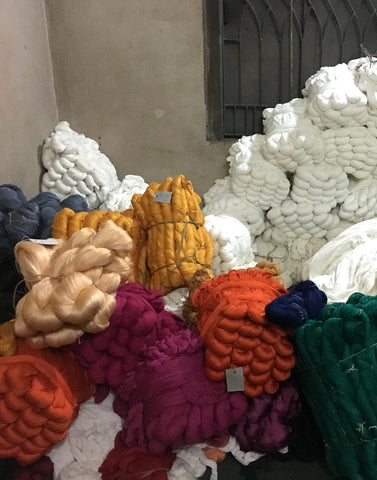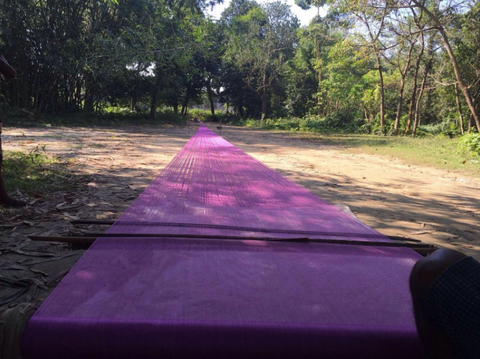How Our Hand Loomed Fabrics Are Made
The true art behind being handmade.

Making handmade textiles requires a lot of patience, an eye for detail, and an artistic hand. It uses solely the power of the human ability to manually weave the fabric, no electricity.

 The small and minute imperfections, are quite actually, a beautiful reflection of all of the hands that have gone into creating the textile. It is a intricate, slow process and each weave can weave up to 3 yards of fabric a day, taking months to produce. Hand looming is a timeless tradition, and still today employs more people than machine made fabric.
The small and minute imperfections, are quite actually, a beautiful reflection of all of the hands that have gone into creating the textile. It is a intricate, slow process and each weave can weave up to 3 yards of fabric a day, taking months to produce. Hand looming is a timeless tradition, and still today employs more people than machine made fabric.
 We work with several weavers in the rural towns of West Bengal, India to produce our textiles.
We work with several weavers in the rural towns of West Bengal, India to produce our textiles.
Woman sitting on her porch winding the dyed yarns into spools.
Dyed yarn being stretched almost a city block distance. Starch is applied to the yarns to prep for weaving.

-
The Essentials
Weaving is done by intersecting the longitudinal threads (warp), with the transverse threads (weft). The loom is made of a series of wooden beams, ropes, pulleys, and shafts. Setting up the warp on the loom is a tedious process and can take up to takes 2-3 days. Each weft yarn is then woven into the warp with the help of shuttle and pedals; without the use of any electricity

Nothing like seeing the true artist at work. Seen pictured below, is the cotton twill textile, on the loom, for the Kimono Jacket and Sunday Pants from SS2020 collection.


 There are countless forms of textile design to regions all over India and the world. Handlooming has a direct connection to it's culture, it's history, and the people of each community. The aesthetic and skill is handed down from generation to generation for centuries. Handloomed fabric provides stories. It is history, family and culture in material form.
There are countless forms of textile design to regions all over India and the world. Handlooming has a direct connection to it's culture, it's history, and the people of each community. The aesthetic and skill is handed down from generation to generation for centuries. Handloomed fabric provides stories. It is history, family and culture in material form.
Take a look at one of the artisans at work on the loom!

